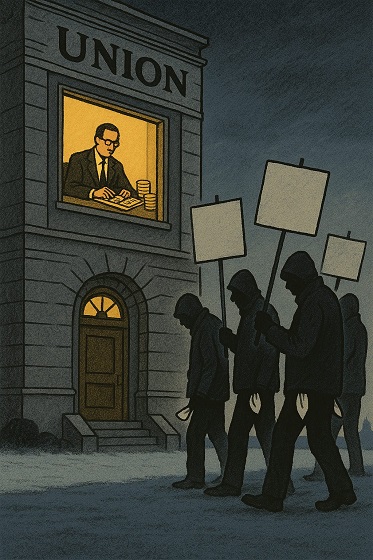Business
DOGE Theory

One of the most intriguing developments following Donald Trump’s election victory has been the announcement of Elon Musk and Vivek Ramaswamy’s Department of Government Efficiency, or DOGE. The initiative, which hopes to cut up to $2 trillion from the federal budget, has generated notable excitement, momentum, and memes. The world’s richest man and a successful biotech entrepreneur, Ramaswamy, have revitalized what seemed to be a mostly dormant libertarianism, drawing on the inspiration of Milton Friedman and promising to slash the bureaucracy to the bone. But what are its prospects for real-world success?
Elon Musk is our era’s most gifted entrepreneur, having revolutionized several industries and run multiple major companies. But the private sector operates on radically different principles than the public sector, which has a way of stalling or disarming even the most determined efforts. I foresee three potential impediments to DOGE’s success.
First is the problem of authority. While President-elect Trump has dubbed the effort the “Department of Government Efficiency,” it is not a government department at all. Rather, Musk and Ramaswamy will remain in the private sector and preside over what is, in effect, a blue-ribbon committee providing recommendations to the president and to Congress about potential cuts. In practice, though, blue-ribbon committees are often where ideas go to die. Politicians who feel the need to “do something” about a given problem often establish such committees to create the perception of action, which masks their true desire or, at least, the eventual result: inaction.
DOGE’s challenge will be to translate its recommendations into policy. It is almost certain that an entrepreneur of Musk’s ambition will not be content with writing a report. His and Ramaswamy’s task, then, is to persuade the president and the director of the Office of Management and Budget to enact real (and politically risky) cuts, and, if possible, to persuade Congress to abolish entire departments, such as the Department of Education, in the face of left-wing backlash.
The second problem for Musk and Ramaswamy is public opinion. Libertarians and small-government conservatives have long promised to reduce the size of government; one reason that they have never done so is that federal programs and agencies are generally popular. All of the major federal departments, with the exception of the IRS, the Department of Education, and the Department of Justice, have net-positive favorability numbers. Congressional members, even conservative Republicans, fear that slashing these departments would expose them to savage criticism from the Left and backlash from voters. They know that Americans complain about the size of government in theory but oppose almost all spending cuts in practice—the key paradox that libertarians have been unable to resolve.
Musk and Ramaswamy have repeatedly appealed to the work of Argentinian president Javier Milei, who has dramatically reduced the number of departments and created flashy video clips of himself stripping down organizational charts and yelling, “Afuera!” But what is possible in Argentina, which has been mired in a decades-long economic crisis, may not be achievable in the United States, which is much more stable, and, consequently, may not have the appetite for such dramatic action.
Which brings us to the problem of politics. Sending a rocket into space requires mastery over physics, but cutting government departments requires mastery over a more formidable enemy: bureaucracy. As Musk and Ramaswamy will see, the relationship between would-be reformers and Congress is vastly different from that between a CEO and a board of directors. To succeed, Musk and Ramaswamy must persuade a group of politicians, each with their own interests, to assume a high level of risk.
DOGE’s first task—identifying the budget items to cut—is the easy part. The hard part will be actually cutting them. They will have to convince Congress, which, for nearly 100 years, has refused to reduce the size of government, even when that notion had bipartisan support, as it did during the presidency of Bill Clinton, who promised that “the era of big government is over.”
This does not mean that DOGE cannot succeed. Though there may not be an appetite for a $2 trillion reduction in government spending, there is a hunger for targeted cuts that would strip the federal government of hostile ideologies that have made our institutions dysfunctional and our national life worse. For example, slashing grant funding for critical race theory would likely win support from voters; cutting the budget for USDA meat inspectors would not, and, given opportunity costs, would probably prove unproductive as well.
Perhaps the name of this committee—the Department of Government Efficiency—is also slightly off the mark. The problem is not only about efficiency, which suggests quantity, but about orientation, which implies quality. The federal government has long been captured by ideologies that misdirect its efforts. Simply making the bureaucracy more efficient will not solve that problem. DOGE must first determine what federal spending is worthwhile; from there, it can focus on creating “efficiencies.”
I hope that Musk and Ramaswamy can dispel my pessimism. Political realities have stifled countless reform efforts before now, and DOGE is an enterprise that would be difficult, if not impossible, under normal circumstances. But these are two remarkably talented men; if anyone is capable of shattering the mold, they can.
Please share your ideas, dissents, and thoughts in the comments. In the next newsletter, we will feature the best material in a“comment of the week” section. In the meantime, have a wonderful Thanksgiving.
Artificial Intelligence
Lawsuit Claims Google Secretly Used Gemini AI to Scan Private Gmail and Chat Data
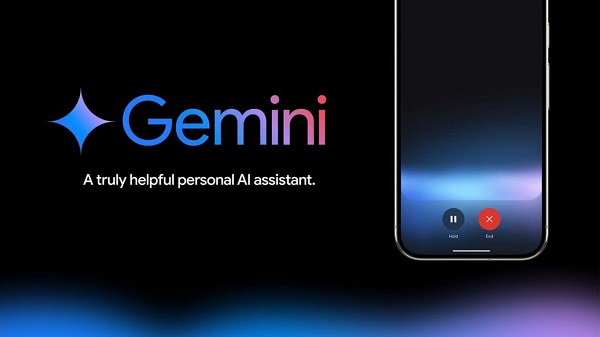
Whether the claims are true or not, privacy in Google’s universe has long been less a right than a nostalgic illusion.
|
When Google flipped a digital switch in October 2025, few users noticed anything unusual.
Gmail loaded as usual, Chat messages zipped across screens, and Meet calls continued without interruption.
Yet, according to a new class action lawsuit, something significant had changed beneath the surface.
We obtained a copy of the lawsuit for you here.
Plaintiffs claim that Google silently activated its artificial intelligence system, Gemini, across its communication platforms, turning private conversations into raw material for machine analysis.
The lawsuit, filed by Thomas Thele and Melo Porter, describes a scenario that reads like a breach of trust.
It accuses Google of enabling Gemini to “access and exploit the entire recorded history of its users’ private communications, including literally every email and attachment sent and received.”
The filing argues that the company’s conduct “violates its users’ reasonable expectations of privacy.”
Until early October, Gemini’s data processing was supposedly available only to those who opted in.
Then, the plaintiffs claim, Google “turned it on for everyone by default,” allowing the system to mine the contents of emails, attachments, and conversations across Gmail, Chat, and Meet.
The complaint points to a particular line in Google’s settings, “When you turn this setting on, you agree,” as misleading, since the feature “had already been switched on.”
This, according to the filing, represents a deliberate misdirection designed to create the illusion of consent where none existed.
There is a certain irony woven through the outrage. For all the noise about privacy, most users long ago accepted the quiet trade that powers Google’s empire.
They search, share, and store their digital lives inside Google’s ecosystem, knowing the company thrives on data.
The lawsuit may sound shocking, but for many, it simply exposes what has been implicit all along: if you live in Google’s world, privacy has already been priced into the convenience.
Thele warns that Gemini’s access could expose “financial information and records, employment information and records, religious affiliations and activities, political affiliations and activities, medical care and records, the identities of his family, friends, and other contacts, social habits and activities, eating habits, shopping habits, exercise habits, [and] the extent to which he is involved in the activities of his children.”
In other words, the system’s reach, if the allegations prove true, could extend into nearly every aspect of a user’s personal life.
The plaintiffs argue that Gemini’s analytical capabilities allow Google to “cross-reference and conduct unlimited analysis toward unmerited, improper, and monetizable insights” about users’ private relationships and behaviors.
The complaint brands the company’s actions as “deceptive and unethical,” claiming Google “surreptitiously turned on this AI tracking ‘feature’ without informing or obtaining the consent of Plaintiffs and Class Members.” Such conduct, it says, is “highly offensive” and “defies social norms.”
The case invokes a formidable set of statutes, including the California Invasion of Privacy Act, the California Computer Data Access and Fraud Act, the Stored Communications Act, and California’s constitutional right to privacy.
Google is yet to comment on the filing.
|
|
|
|
Reclaim The Net is reader-supported. Consider becoming a paid subscriber.
|
|
|
|
Business
Nearly One-Quarter of Consumer-Goods Firms Preparing to Exit Canada, Industry CEO Warns Parliament

Standing Committee on Industry and Technology hears stark testimony that rising costs and stalled investment are pushing companies out of the Canadian market.
There’s a number that should stop this country cold: twenty-three percent. That is the share of companies in one of Canada’s essential manufacturing and consumer-goods sectors now preparing to withdraw products from the Canadian market or exit entirely within the next two years. And this wasn’t whispered at a business luncheon or buried in a consultancy memo. It was delivered straight to Parliament, at the House of Commons Standing Committee on Industry and Technology, during its study on Canada’s underlying productivity gaps and capital outflow.
Michael Graydon, the CEO of Food, Health & Consumer Products of Canada, didn’t hedge or soften the message. He told MPs, “23% of our members expect to exit products from the Canadian marketplace within the next two years, because the cost of doing business here has just become unsustainable.”
Unsustainable. That’s the word he used. And when the people who actually make things in this country start using that word, you should pay attention. These aren’t fringe players or hypothetical startups. These are firms that supply the goods Canadians buy every single day, and they’re looking at their balance sheets, their regulatory burdens, the delays in getting anything approved or built, and concluding that Canada simply doesn’t work for them anymore.
What makes this more troubling is the timing. Canada’s investment levels have been falling for years, even as the United States and other competitors race ahead. Businesses aren’t reinvesting in machinery or technology at the rate they once did. They’re not modernizing their operations here. They’re putting expansion plans on hold or shifting them to jurisdictions that move faster, cost less and offer clearer rules. That’s not ideology; it’s arithmetic. If it costs more to operate here, if it takes longer to get a permit, and if supply chains back up because ports and rail lines are jammed, investors will choose the place that doesn’t make growth a bureaucratic mountain climb.
Graydon raised another point that ought to concern anyone who cares about domestic production. Canada’s agrifood sector recorded a sixty-billion-dollar trade surplus last year, one of the brightest spots in the national economy, but according to him that potential is being “diluted by fragmented interprovincial trade and logistics bottlenecks.” The ports, the rail corridors, the entire transport network—choke points everywhere. And you can’t build a productive economy on choke points. Companies can’t scale, can’t guarantee delivery, can’t justify the costs. So they leave.
This twenty-three percent figure is the clearest evidence yet that the problem isn’t theoretical. It’s not something for think-tank panels or academic papers. It is happening at the level that matters most: the decision whether to continue doing business in Canada or move operations somewhere more predictable. And once those decisions are made, they’re very hard to reverse. Capital doesn’t boomerang back out of patriotism. It goes where it can earn a return.
For years, Canadian policymakers have talked about productivity as if it were a moral failing of workers or a mystical national characteristic. It’s neither. Productivity comes from investment—real money poured into equipment, technology, training and expansion. When investment stalls, productivity collapses. And when a quarter of firms in a major sector are already planning their exit, you are not looking at a temporary dip. You are looking at a structural rejection of the business environment itself.
The fact that executives are now openly warning Parliament that they cannot afford to stay is a moment of clarity. It is also a test. Either this country becomes a place where people can build things again—quickly, affordably, competitively—or it continues down the path that leads to empty factories, hollowed-out supply chains and consumers who wonder why the shelves look thinner every year.
Twenty-three percent is not just a statistic. It’s the sound of a warning bell ringing at full volume. The only question now is whether anyone in charge hears it.
-
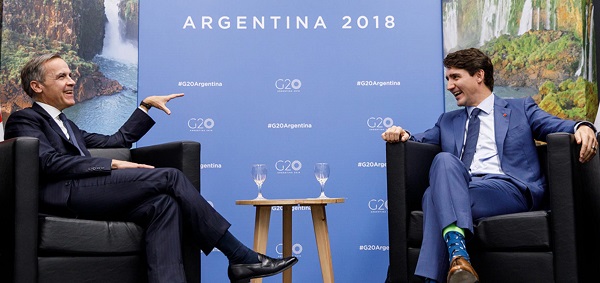
 Carbon Tax2 days ago
Carbon Tax2 days agoCarney fails to undo Trudeau’s devastating energy policies
-

 Alberta1 day ago
Alberta1 day agoAlbertans choose new licence plate design with the “Strong and Free” motto
-
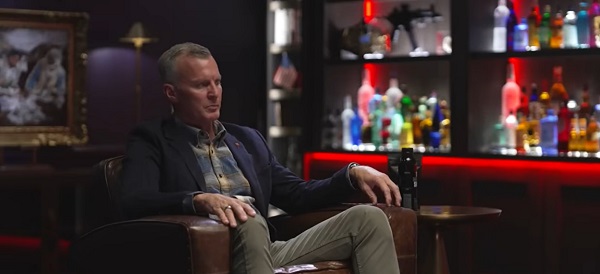
 Daily Caller2 days ago
Daily Caller2 days ago‘Holy Sh*t!’: Podcaster Aghast As Charlie Kirk’s Security Leader Reads Texts He Allegedly Sent University Police
-
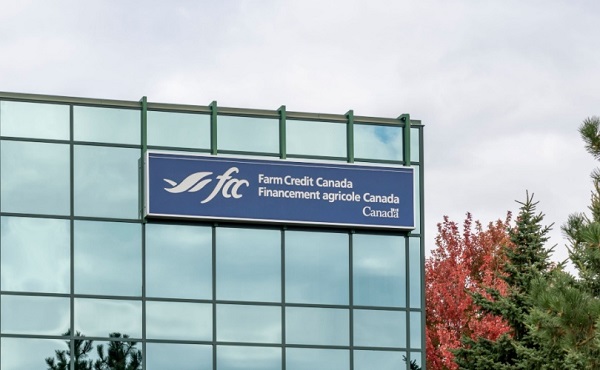
 Agriculture2 days ago
Agriculture2 days agoFederal cabinet calls for Canadian bank used primarily by white farmers to be more diverse
-

 Business2 days ago
Business2 days agoThe UN Pushing Carbon Taxes, Punishing Prosperity, And Promoting Poverty
-

 Alberta1 day ago
Alberta1 day agoEdmonton and Red Deer to Host 2027 IIHF World Junior Hockey Championship
-

 Great Reset2 days ago
Great Reset2 days agoCanadian government forcing doctors to promote euthanasia to patients: report
-

 Health1 day ago
Health1 day agoNEW STUDY: Infant Vaccine “Intensity” Strongly Predicts Autism Rates Worldwide










